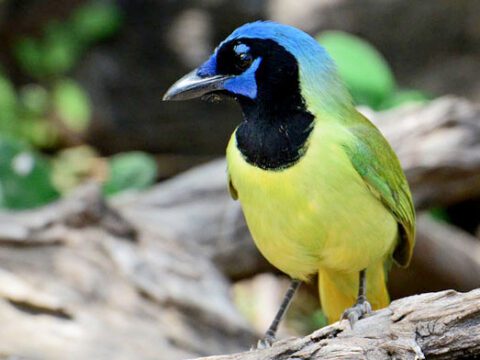View From Sapsucker Woods: Hosting Cuban Scientists
Text and photo by John W. Fitzpatrick
July 15, 2012

We experienced an unprecedented spring migration this year—a northward movement that once was unimaginable. Its evolutionary origin dates back 10 years. Last year, well before flight, this migration appeared to lose momentum amid continuing storms. But this year the skies parted, and we were treated to a magical two months we hope can be repeated often during the years to come.
Since 2002, with support from the MacArthur Foundation, the Cornell Lab has had the privilege of working with dozens of students and young professionals across the island of Cuba. Our goals are to help build expertise, resources, and energy for biodiversity conservation, and to help increase awareness and appreciation of birds across Cuban society. We are fortunate to be collaborating with an already strong and well-educated community of scientists and conservationists, through a program of research and training with numerous universities and research centers, all permitted by Cuba’s ministry of science, technology, and the environment (CITMA).
We knew from the start that our patience would be tested, as an out-dated political standoff continues to enforce a reprehensible cultural gulf far more daunting than the mere 90 miles physically separating our two countries. For most citizens of the United States, Cuba has been a “black hole” because of a tight economic embargo first imposed back in the 1960s. But we also knew that both the natural resources of Cuba and the cultural vibrancy of the Cubans richly deserved investment as a new generation of Cuban scientists comes of age. So, while securing the necessary licenses from both countries, we sought input from the Cubans themselves on how we might best contribute to their training, research and monitoring, and conservation efforts.
By far the most biologically diverse island in the Caribbean, Cuba harbors 370 species of birds, including 28 species unique to the island and more than 250 species that migrate to breed on the North American mainland. Among our objectives is to understand the ecological roles these migrants play, with an aim toward helping Cuban scientists develop strategies for bird protection nationwide. We teach intensive field courses, assist with ecological inventories in protected natural areas, develop and print public education materials, and ship thousands of pounds of scientific literature to the island. With Cornell University Press, we recently completed an all-Spanish edition of the field guide, Aves de Cuba, printed 10,000 copies, and shipped them to Cuba for free distribution to schools, parks, and public offices all across the country.
Two years ago, we dreamed up a far-fetched idea: Could a group of students one day migrate north with their birds? We set the idea in motion, weathering all discouragement. Finally, in early April this year, seven wonderfully energetic and intellectually curious Cuban students (see photo of them studying a softshell turtle, above) arrived on U. S. soil for an epic learning adventure that has changed all of our lives. They began in Florida, conducting mini-research projects and assisting with long-term ecological research at Archbold Biological Station. Then in early May, like good Neotropical migrants, they continued north for studies and writing at Cornell. They returned to their homeland in June, following visits to New York City (American Museum of Natural History) and the Everglades ecosystems. Every person fortunate enough to meet this group during the two months they were with us was impressed both by their enthusiasm for learning, and by their passionate, charismatic personalities.
We are proud to have hosted what we believe to be the largest group of Cuban student scientists to travel together in the United States in 50 years. We will do everything in our power to make this milestone migration a regular occurrence. After all, the birds we share with Cuba can do it twice a year!
—John W. Fitzpatrick
Louis Agassiz Fuertes Director


All About Birds is a free resource
Available for everyone,
funded by donors like you








